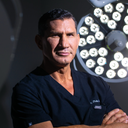Posted underFacelift q&a
I started losing my hair after my plastic surgery. I had a brow lift and facelift, is there anyways to reverse this?
After the surgery I noticed my hair was coming out . It's getting really thin and becoming a problem. Is there any way to reverse this ?
Answers (16)
From board-certified doctors and trusted medical professionals

Dr. James Bonaparte, MD, MSc, FRCSC
Facial Plastic Surgeon, Certified in Otolaryngology – Head and Neck Surgery
Answer
More Facelift Questions
See all Facelift Q&AWE SEND PRETTY
EMAILS
What’s trending? Who’s turning heads? Which TikTok myths need busting? We’ve got you. No fluff, no gatekeeping—just real talk. Get our free, unfiltered newsletter.








